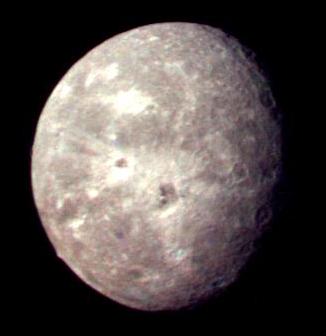Oberon :
The discovery of Oberon, along with
Titania,
is credited to W. Herschel, in 1789. From the point of view of it's general composition (half rock half ice), it does not stand out from the other satellites
around Uranus. On the other hand its surface is very different. These different areas that make up the surface,
as well as having different
albedo's, have different compositions. In
Ariel's case, for example, even though there are areas of varying albedo's,
the composition of the material does not change, this difference in reflective power is due only to the varying time of exposure to sunlight of the ground
